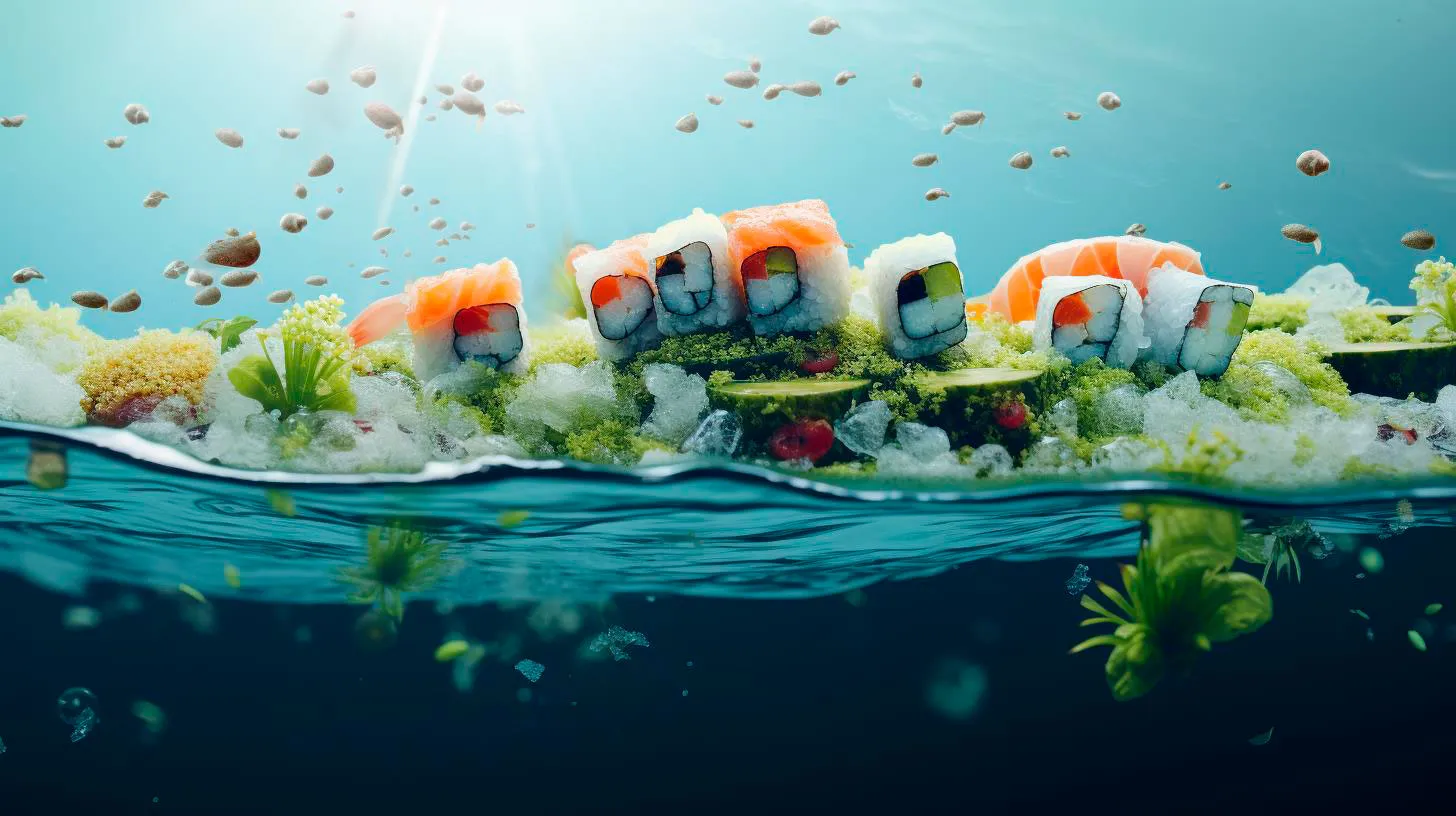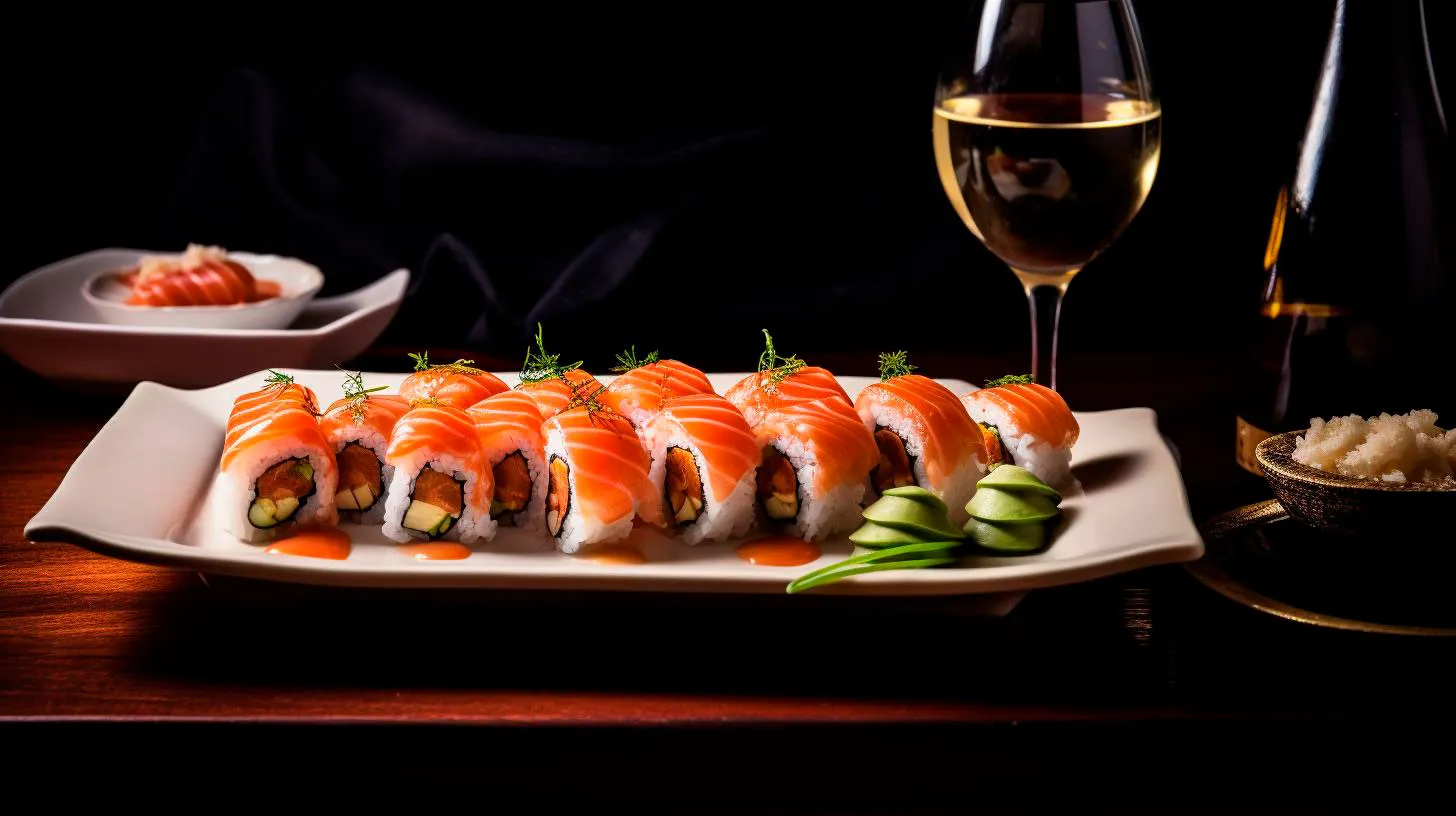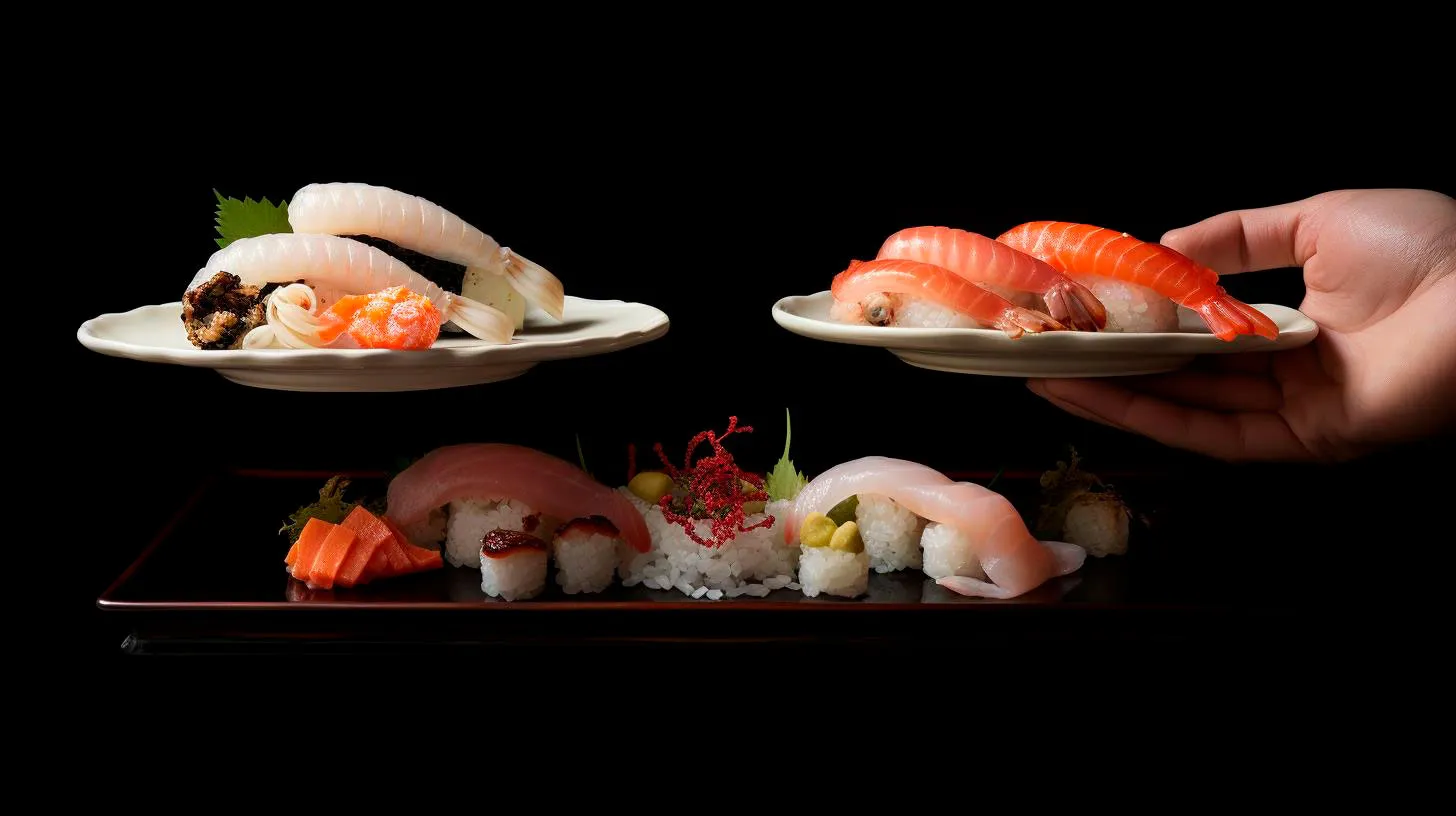Preserving Culinary Legacies: Sushi Chefs Passing Down Time-Honored Skills
In this article, we will explore the importance of preserving these culinary legacies and how sushi chefs play a crucial role in keeping this tradition alive.
The Art of Sushi Making
Sushi making is a meticulous process that requires precision, creativity, and a deep understanding of ingredients. From selecting the freshest fish and seafood to meticulously preparing the rice and mastering the art of knife skills, every step is crucial in crafting a perfect plate of sushi. This skill is honed over many years of practice and apprenticeship under experienced sushi chefs.
Key Takeaways:
- Sushi making is an art that requires precision and creativity.
- Meticulous attention to detail is necessary for selecting ingredients and preparing the sushi rice.
- Knife skills are a crucial aspect of sushi making.
The Role of Sushi Chefs
Sushi chefs, or itamae, hold a revered position in Japanese culture. They are not only skilled in the culinary arts but also in the cultural traditions associated with sushi making. These chefs undergo years of rigorous training, often starting as apprentices in sushi restaurants, before they are considered masters of their craft. The passing down of knowledge from experienced chefs to apprentices ensures that the sushi-making tradition is preserved.
Advantages of Preserving Culinary Legacies:
- Retains cultural heritage: Preserving culinary legacies helps maintain cultural traditions and the pride associated with them.
- Ensures authentic taste and quality: By passing down time-honored recipes and techniques, the authenticity and quality of sushi are upheld.
- Encourages innovation: While preserving tradition is essential, it also leaves room for new interpretations and innovation within the culinary field.
Techniques and Secrets Passed Down
Sushi chefs pass down not only their technical skills but also their secrets and knowledge, accumulated over years of hands-on experience. Some of the techniques and secrets that are shared include:
- Knife skills: Sushi chefs learn the art of using knives to make precise cuts, ensuring the perfect texture and presentation of sushi.
- Seasoning: Understanding the right balance of soy sauce, wasabi, and other seasonings is crucial in enhancing the flavors of each sushi roll.
- Rice preparation: Perfecting the art of cooking and seasoning sushi rice is a skill that is taught meticulously, as it forms the foundation of any good sushi dish.
- Fish selection: Knowing how to choose the freshest and highest quality fish is an important skill that ensures the sushi’s taste and safety.
Preservation in the Modern Era
In today’s modern world, preserving culinary legacies is more important than ever. With globalization and changing food preferences, it becomes crucial to ensure that the art of sushi making is not lost. Technology has also played a significant role in preserving these traditions. Sushi chefs and culinary experts now have online platforms, social media, and blogs to share their knowledge, attracting a global audience and passing down their skills to aspiring chefs.
Key Statistics:
- In 2019, the global sushi market was valued at $13.4 billion and is projected to reach $22.1 billion by 2027.
- In Japan, it takes an average of 10 years to become a qualified sushi chef.
- According to a survey, over 90% of sushi consumers consider the skills of the sushi chef important when choosing a sushi restaurant.
In Conclusion
Sushi chefs play a significant role in preserving the culinary legacies associated with this beloved Japanese dish. Through rigorous training, apprenticeships, and the passing down of knowledge and skills, sushi chefs ensure that the art of sushi making continues to thrive. By preserving these traditions, we honor the rich cultural heritage and maintain the authenticity and quality that sushi represents. So next time you savor a piece of sushi, remember the skilled hands that have crafted it, preserving a centuries-old legacy for generations to come.
From Edo to Today: Tracing the Evolution of Sushi Recipes
The history of sushi is a fascinating tale of culinary innovation, cultural exchange, and adaptation. Join us as we embark on a journey through time, exploring the evolution of sushi recipes from ancient times to the modern era.
The Origins of Sushi: A Taste of Edo
Our story starts in Edo, present-day Tokyo, during the 17th century. Back then, sushi wasn’t the fish-filled delight we know today but rather a way to preserve fish. This early style, known as “Edomae sushi,” involved fermenting fish with rice. The rice was then discarded, and only the fish was consumed. Over time, chefs began to experiment, adding vinegar to the rice to accelerate the fermentation process and enhance the flavor.
Key takeaways:
- Edomae sushi originated in Edo, now known as Tokyo.
- Early sushi recipes involved fermenting fish with rice.
- Adding vinegar to the rice enhanced flavor and preservation.
The Makizushi Revolution: Embracing Innovation
As sushi grew in popularity, so did the desire for more convenient and portable options. Enter the makizushi, or rolled sushi, which revolutionized the presentation of this delectable dish. Makizushi consists of placing various ingredients, such as fish, vegetables, or pickles, on a sheet of nori (seaweed), rolling it tightly using a bamboo mat, and then slicing it into bite-sized pieces. This technique allowed sushi to be enjoyed on the go and introduced endless possibilities for flavor combinations.
Key takeaways:
- Makizushi introduced the convenience and portability of sushi.
- Nori (seaweed) became an integral part of sushi preparation.
- Flavor combinations in makizushi expanded exponentially.
The Rise of Nigiri: Minimalism Meets Elegance
While makizushi rose to popularity, another form of sushi quietly emerged in the early 19th century: nigiri. Nigiri sushi introduced a minimalist approach by placing a small mound of vinegared rice topped with a slice of fresh fish. The simplicity of this dish allowed the delicate flavors of the fish to shine. Nigiri quickly gained favor among sushi enthusiasts and became a benchmark of sushi craftsmanship.
Key takeaways:
- Nigiri sushi highlighted the natural flavors of fresh fish.
- It consisted of rice topped with a slice of raw fish.
- Nigiri became a symbol of sushi craftsmanship.
The Modern Twist: Fusion and Innovation
In recent years, sushi has undergone a new wave of transformation, thanks to globalization and ever-evolving culinary trends. Sushi has diversified beyond its traditional boundaries, blending with flavors and ingredients from different cuisines. This fusion of cultures has given birth to contemporary rolls like the California roll, filled with ingredients like avocado, cucumber, and crabmeat, which cater to a wider range of palates.
Key takeaways:
- Globalization has influenced the fusion of sushi with other cuisines.
- Contemporary rolls, like the California roll, incorporate diverse ingredients.
- Sushi now caters to a broader range of palates.
The Health Benefits of Sushi
Besides its rich history and culinary evolution, sushi also comes with several health benefits. Here are some key advantages:
- Sushi is packed with essential nutrients, such as omega-3 fatty acids and high-quality protein.
- Seaweed used in sushi is a good source of vitamins and minerals, such as iodine and calcium.
- Include fish like salmon in your sushi for heart-healthy fats and vitamin D.
- Eating sushi with wasabi may have antibacterial properties, potentially aiding digestion.
- Choose sushi with brown rice for added fiber and a lower glycemic index.
In conclusion, the evolution of sushi from its humble beginnings in Edo to the innovative and diverse culinary delight we savor today is a testament to the adaptability and creativity of Japanese cuisine. As sushi continues to evolve, influenced by global flavors and trends, it maintains its place as one of the world’s most beloved dishes.
The Art of Sushi Making: Honoring an Ancient Culinary Craft
In this article, we delve into the art of sushi making, exploring its origins, techniques, and its role in contemporary gastronomy.
The Origins of Sushi
The roots of sushi can be traced back to ancient Japan, where it emerged as a way to preserve fish. Originally, fish was fermented and wrapped in rice, but over time, this preservation method evolved into what we now know as sushi. During the Edo period in Japan, sushi transformed into a popular street food, with the development of nigiri sushi – a hand-pressed rice topped with fresh fish.
Notably, sushi owes its origins to China. In the 8th century, Japanese envoy, named Fujiwara no Yorimichi, encountered a unique preservation technique in China. This technique involved preserving fish in fermented rice, which eventually made its way back to Japan and laid the foundation for the sushi we know today.
Today, sushi embodies the culmination of centuries-long culinary refinement and symbolizes Japan’s rich cultural heritage. It has transcended borders and become a global phenomenon cherished by food enthusiasts worldwide.
The Artistic Techniques of Sushi Making
Sushi making is not merely about the ingredients; it encompasses a range of artistic techniques and skills that have been perfected by sushi chefs over generations. Here are some key techniques and elements that make sushi an art form:
- Slicing Fish: The precision and skill involved in slicing fish for nigiri sushi is a testament to the dedication of sushi chefs. The angle, thickness, and texture of the fish are carefully determined to enhance the flavor and create a visually appealing experience.
- Perfecting Rice: Sushi rice is the foundation of any sushi dish. Chefs carefully select and season the rice to achieve the perfect balance of texture and taste. The rice must be cooked to optimal stickiness and luster, complementing the fish or other ingredients.
- Decorative Presentations: Sushi chefs often create visually stunning presentations by arranging ingredients in intricate patterns or shapes. These arrangements, known as “garnishes,” add an artistic touch to the dish, elevating the overall dining experience.
Contemporary Significance of Sushi
Sushi has become a global cultural phenomenon, with sushi restaurants dotting cities around the world. Its popularity can be attributed to several factors:
- Health Benefits: Sushi is known for its nutritional value, as it is typically made with fresh fish, vegetables, and seaweed. It is a great source of omega-3 fatty acids, low in calories, and packed with essential nutrients.
- Accessibility: Sushi can cater to various dietary preferences, including vegetarian and vegan options. The availability of different fillings and preparations broadens its appeal and makes it accessible to a diverse range of individuals.
- Rich Culinary Experience: Enjoying sushi is not just about the flavors; it encompasses the entire dining experience. From the precision of sushi making to the artistry in presentation, it provides a holistic culinary journey that engages multiple senses.
The Key Takeaways
Sushi making is an ancient art form that has stood the test of time. From its humble origins in preserving fish to its contemporary global popularity, sushi continues to enthrall food enthusiasts with its delicate flavors and artistic presentation. Here are the key takeaways:
- Sushi originated in Japan as a preservation method for fish.
- The art of sushi making involves intricate techniques like slicing fish and perfecting rice.
- Sushi has gained popularity globally due to its health benefits, accessibility, and rich culinary experience.
As sushi enthusiasts, let us continue to appreciate the craftsmanship and skill that goes into each sushi creation. The art of sushi making not only honors an ancient culinary craft but also serves as a reminder of the beauty and harmony that can be found in every bite.
Reviving Forgotten Techniques: Exploring Sushi’s Traditional Roots
In this article, we delve into the depths of sushi’s roots, highlighting the importance of preserving these time-honored practices.
The Relevance of Traditional Sushi Techniques
In today’s fast-paced world, where convenience and efficiency often take precedence, traditional sushi techniques can feel like a thing of the past. However, there are several reasons why reviving these techniques is crucial:
- Preservation of Cultural Heritage: Traditional sushi techniques carry the essence of Japanese culinary history and cultural heritage. By reviving these techniques, we honor the traditions and customs that have shaped sushi as we know it today.
- Enhanced Flavor and Texture: The traditional methods of preparing sushi, such as hand-pressing rice and utilizing specific knife skills, result in a unique texture and flavor profile. By adhering to these techniques, sushi chefs can create exquisite dishes that showcase the true essence of sushi.
- Showcasing Craftsmanship: Traditional sushi techniques are an art form in themselves. By practicing and preserving these techniques, sushi chefs can display their skill, precision, and mastery of the craft, captivating diners with not only the taste but also the visual appeal of each dish.
Key Traditional Sushi Techniques
Let’s explore some of the key traditional sushi techniques that are worth reviving:
Nigiri
Nigiri sushi, one of the most iconic forms of sushi, involves molding a small mound of vinegared rice with gentle pressure and topping it with a slice of fresh fish or seafood. This technique requires impeccable hand skills and the ability to balance the rice-to-fish ratio flawlessly.
Hand-Pressed Rice
When crafting hand-pressed sushi, each grain of rice is carefully seasoned with a rice vinegar mixture and then delicately formed into bite-sized portions. The chef’s hands play a critical role in creating cohesive and well-proportioned sushi pieces.
Knife Skills
Knife skills are a fundamental aspect of sushi-making. Traditional techniques, such as “Hira-zukuri” (flat slicing) and “Usu-zukuri” (thin slicing), require precision and fine knife work to produce thin and uniform slices of fish with clean edges.
Advantages of Embracing Traditional Sushi Techniques
By embracing and reviving traditional sushi techniques, the industry can reap several benefits:
- Preserving Authenticity: Traditional techniques preserve the authenticity of sushi, allowing diners to experience the flavors, textures, and overall concept that sushi was originally intended to offer.
- Enhancing Customer Satisfaction: Sushi enthusiasts appreciate the skill and effort that goes into preparing sushi using traditional techniques. Embracing these techniques can, therefore, lead to increased customer satisfaction and loyalty.
- Competitive Differentiation: In an era where fusion sushi and modern interpretations dominate the scene, reviving traditional techniques can set a sushi establishment apart from its competitors, creating a unique selling point and attracting discerning customers.
Key Takeaways
While sushi has undoubtedly evolved with modern influences, it is essential to honor and revive the traditional techniques that have shaped this beloved cuisine. By doing so, we preserve the cultural heritage, enhance flavors and textures, and showcase the craftsmanship that sushi embodies.
At a time when authenticity and tradition hold immense value, the revival of forgotten sushi techniques not only respects the roots of this culinary art but also provides a unique and exceptional dining experience for sushi lovers worldwide.



